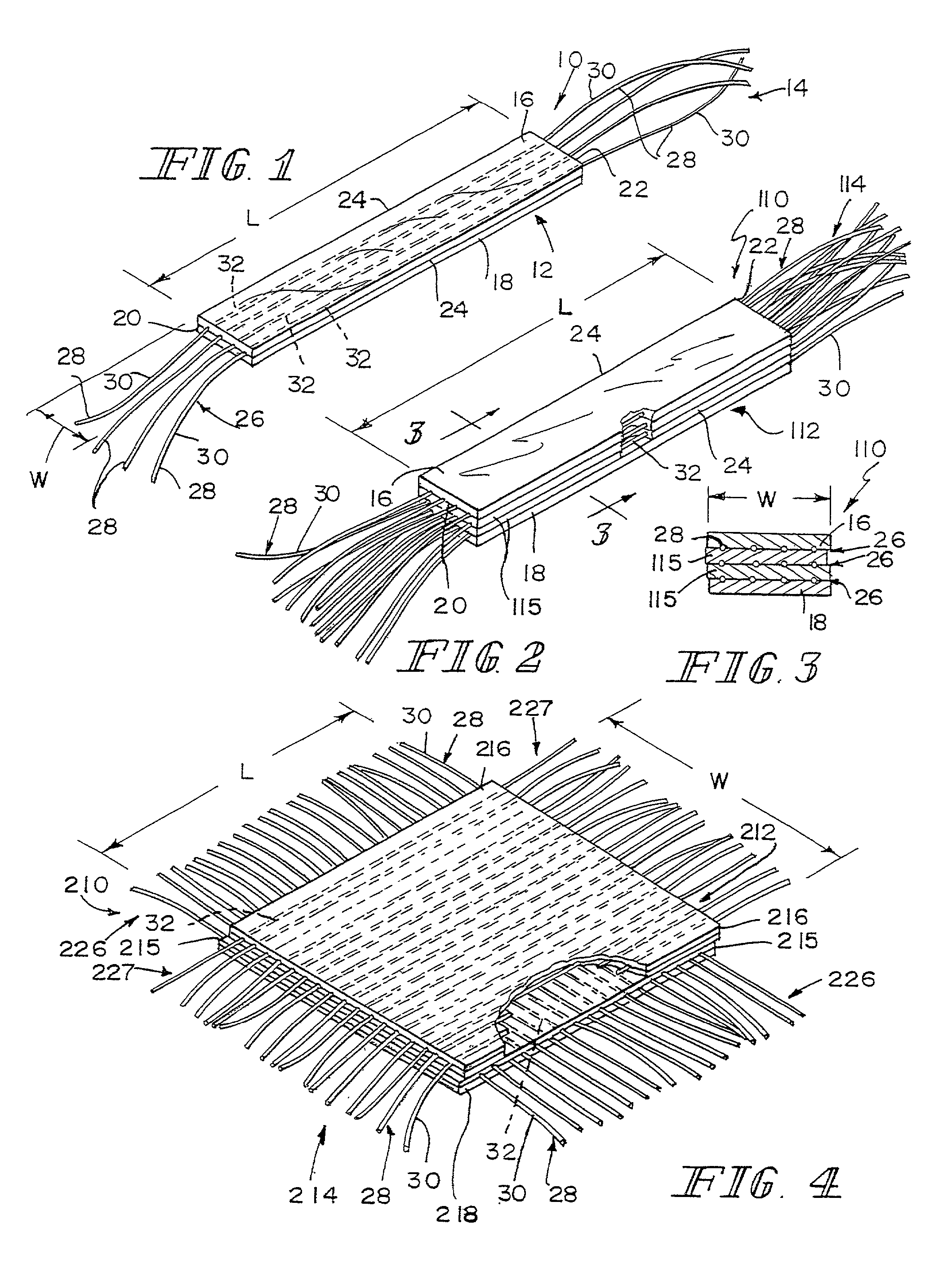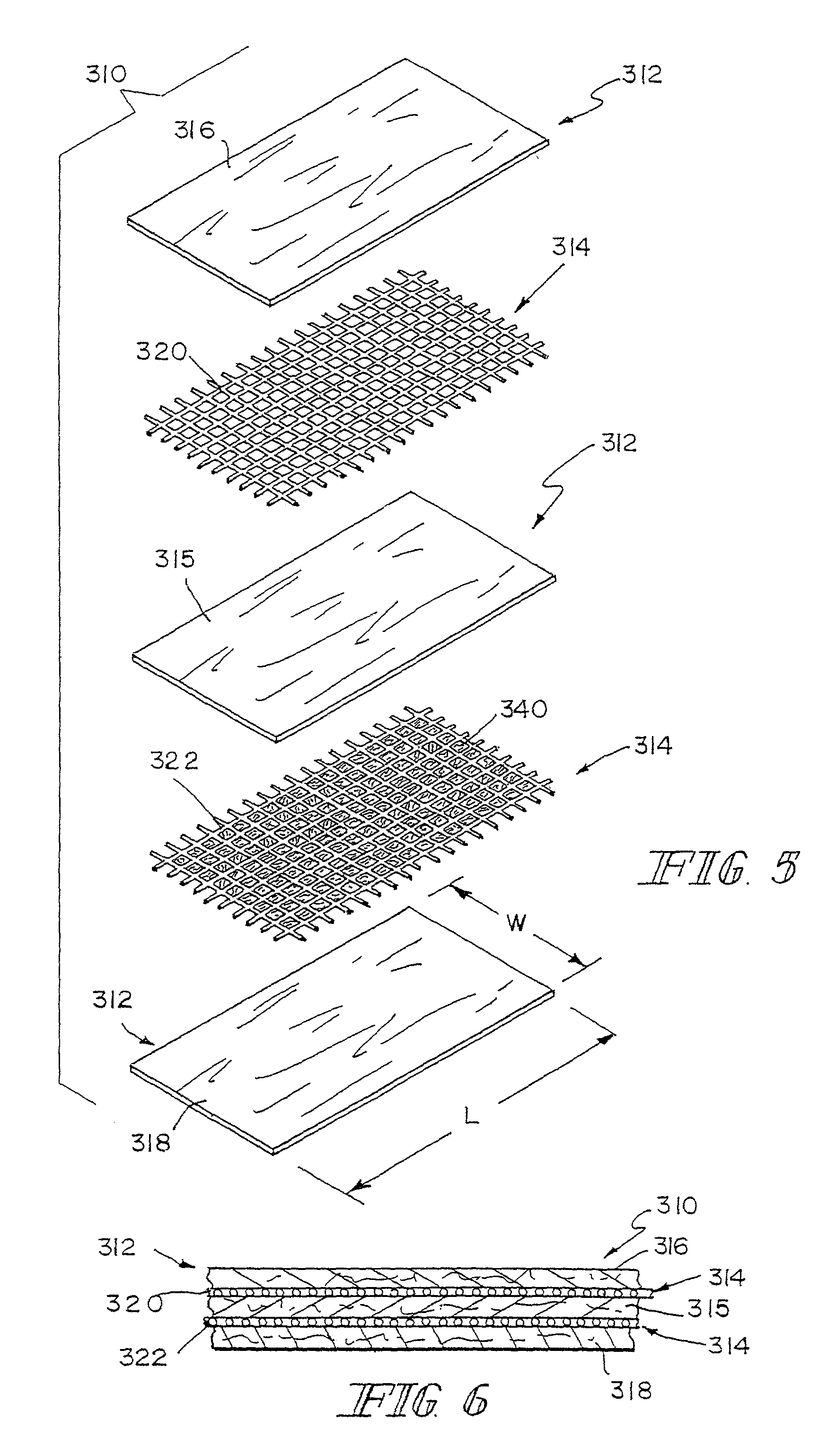Hybrid biologic-synthetic bioabsorbable scaffolds
a bioabsorbable scaffold and hybrid technology, applied in the field of bioprosthetics, to achieve the effects of enhancing tissue infiltration, increasing surface area, and enhancing mechanical integrity of implants
- Summary
- Abstract
- Description
- Claims
- Application Information
AI Technical Summary
Benefits of technology
Problems solved by technology
Method used
Image
Examples
example 2
[0070]This example describes the preparation of three-dimensional composite tissue implants incorporating a biodegradable SIS laminated sheet, a synthetic reinforcement in the form of a biodegradable mesh, and a synthetic degradable foam.
[0071]A solution of the polymer to be lyophilized to form the foam component was prepared in a four step process. A 95:5 weight ratio solution of 1,4-dioxane / (40 / 60 PCL / PLA) was made and poured into a flask. The flask was placed in a water bath, stirring at 60-70° C. for 5 hrs. The solution was filtered using an extraction thimble, extra coarse porosity, type ASTM 170-220 (EC) and stored in flasks.
[0072]A three-dimensional mesh material composed of a 95:5 copolymer of polylactic / polyglycolic acid (PLA / PGA) knitted mesh was rendered flat to control curling by using a compression molder at 80° C. for 2 min. After preparing the mesh, 0.8-mm metal shims were placed at each end of a 4×4 inch aluminum mold, and the mesh was sized to fit the mold. The synt...
example 3
[0077]This example uses the process outlined in Example 2 to fabricate a biodegradable composite scaffold of the present invention where the foam component is a 65:35 PGA / PCL copolymer.
example 4
[0078]This example uses the process outlined in Example 2 to fabricate a biodegradable composite scaffold of the present invention where the synthetic knitted mesh component is composed of 100% PDO.
PUM
| Property | Measurement | Unit |
|---|---|---|
| size | aaaaa | aaaaa |
| size | aaaaa | aaaaa |
| width | aaaaa | aaaaa |
Abstract
Description
Claims
Application Information
 Login to View More
Login to View More - R&D
- Intellectual Property
- Life Sciences
- Materials
- Tech Scout
- Unparalleled Data Quality
- Higher Quality Content
- 60% Fewer Hallucinations
Browse by: Latest US Patents, China's latest patents, Technical Efficacy Thesaurus, Application Domain, Technology Topic, Popular Technical Reports.
© 2025 PatSnap. All rights reserved.Legal|Privacy policy|Modern Slavery Act Transparency Statement|Sitemap|About US| Contact US: help@patsnap.com



